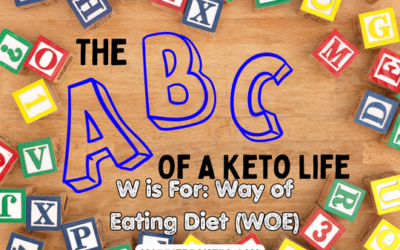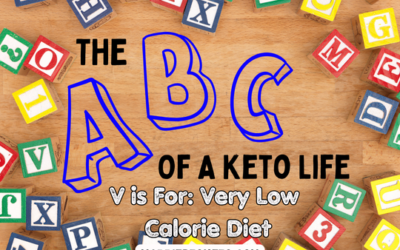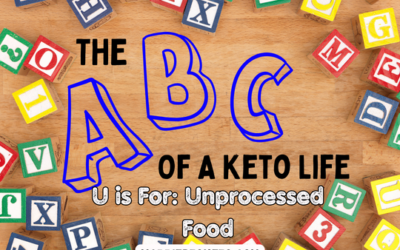No matter if you are a keto newbie or a keto veteran, journaling food is an important part of staying on track. But, it doesn’t have to be overly complicated. There are food apps out there that will help or you can just use plain old pen and paper. The important part to journaling food is that you do it honestly and regularly.
The Purpose of Journaling Food
I remember back to when I was just eating whatever I wanted. Someone asked me how much sugar I took in, and I told them I was well within the standard of 24 grams when it came to added sugars. That’s about 6 teaspoons. Sure, that’s what I was adding to my own food and beverages. What I wasn’t taking into account was the added sugar in all the prepackaged food I was eating. Oh, and then there were the soft drinks! I was easily over the 24 grams by dinner time. But, I wouldn’t realize this because I wasn’t journaling my food.
Now, if you want to be keto, you have to reach ketosis. This means your body uses fat instead of carbs (i.e. glucose) for energy. And to get there, you have to take in about 20 grams or less of net carbs a day. Not sugar – total net carbs. So unless you are tracking, you probably aren’t going to get there.
What to Track
When we first started keto, we tracked our calories and our macros. What are macros or macronutrients? They are the three items that make up food; fat, protein, and carbohydrates. We aim on keto to take in 70% of our calories through fat which your body will eventually be using as its fuel source. Protein makes up another, which represents 20% of the calories you will take in, and carbs, (good healthy carbs) make up the rest which is about 10% or under 20-grams a day.

We track our net carbs. A lot of keto lingo revolves around figuring out the net carbs and as with everything, that comes with its share of controversy. The simplest way to figure out how many carbs are in something is look at carbohydrates on the label and subtract the fiber. That is your true net carbs.
Using Paper for Journaling Food
Our food journal was simple. Each day, we recorded what we ate. Then, we looked up the macros for each item we ate. So, if we ate two eggs, we wrote that down. Two eggs have 160 calories, 11 grams of fat, 1 gram of carbs, and 13 grams of protein. We would keep our chart going for the rest of the day.
From there, it can get as complicated or kept as easy as you like. You can just make sure you are not taking in any more than 20 grams of net carbs a day but just adding up your totals. If you want to figure out the percentages of each macro you are taking in, it’s a little more complicated but certainly doable. We have an article on our keto science page on our website to help you out with that.
Using Journaling Food Apps
There are a couple of free apps available to help you track your food. Carb Manager is one of the main ones, but as a Canadian we’ve found this app tends to focus on American brands so it isn’t as useful to us. But many people swear by it. We do enjoy the blog that is with it. It has some great keto articles.
The one we have tended to use is My Fitness Pal. This app has lots of great information and is easy to use. Even the free version gives you your macros from the day. We just find it easier to use paper and a pen because we’re old school – or maybe we’re just old.
A Final Thought
No matter how you journal, it’s important that you do it. Even after doing keto for 3 years, Bill and occasionally journal our food to make sure we are on track. And, every time, we find out we were a little off what we thought we were. It’s very human to underestimate what you are eating – and that’s why we need to journal.
Wendy





